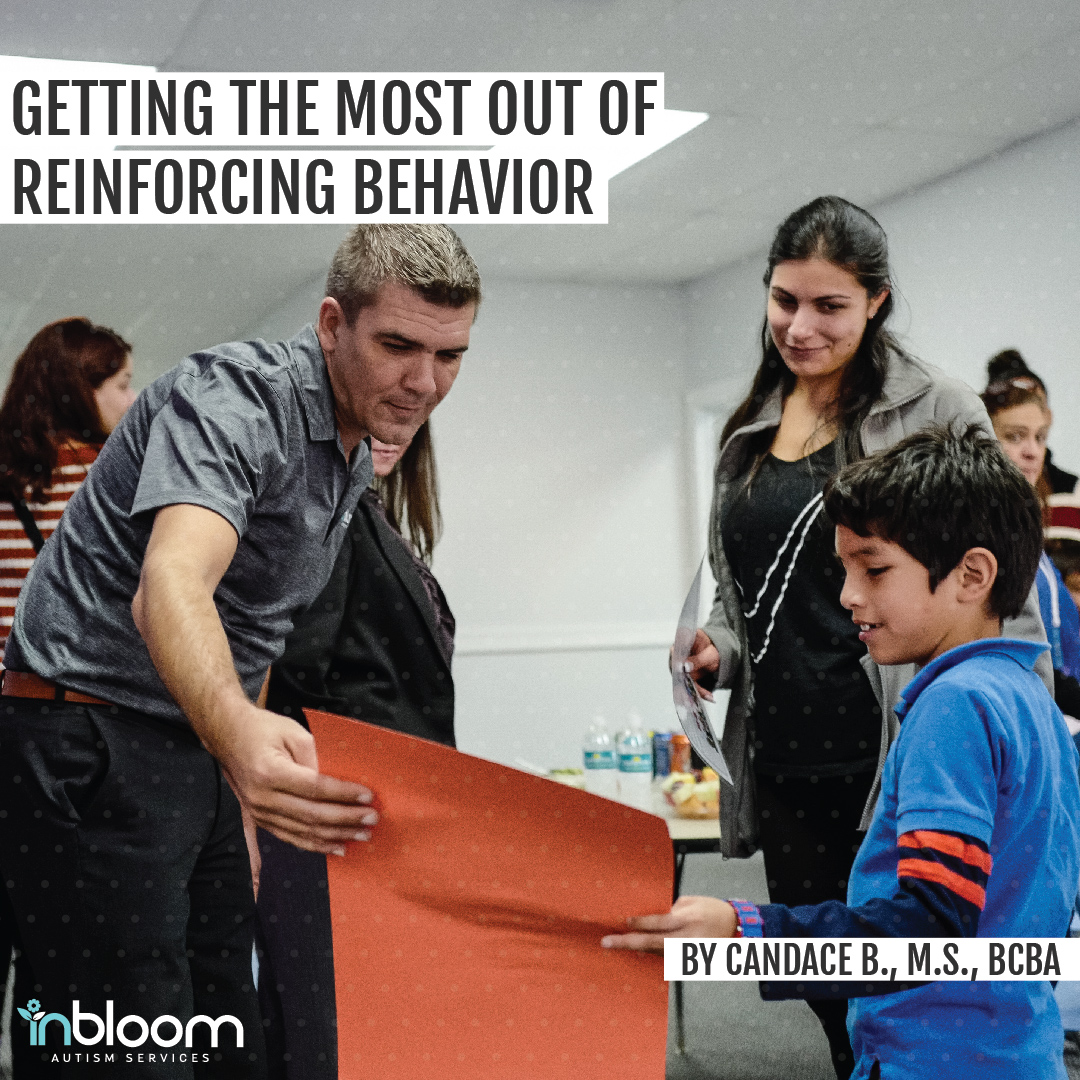GETTING THE MOST OUT OF REINFORCING BEHAVIOR

If you’ve ever said, “You better stop doing that or you won’t get your iPad for a week!” or something similar to get your child to stop engaging in undesired behavior, then keep reading! Here, we’re going to take some words and define them within the context of Applied Behavior Analysis.
Each time a threat is made and there is no follow through with the mentioned consequence, learning is taking place and eventually your child will learn that these are empty threats.
WHAT IS A THREAT?
Threats are words used to get the outcome YOU want. In the example above, it simply means getting your child to behave. We are not talking about violent threats; We are talking about those phrases you might say out of frustration that aren’t even practical – all in hopes of getting your child to calm down right then and there. Some examples might be, “stop screaming or you won’t eat tonight!” or, “If you keep it up, I’m going to leave without you.” Reading them right now, they sound silly, right? But these are some examples of threats that get used to get children to behave. I know you are a good parent and are not ever going to leave them behind or deprive them of dinner, however, even when it feels like you are at your breaking point, it is important to think about what you are going to say before it comes out.
Each time a threat is made and there is no follow through with the mentioned consequence, learning is taking place and eventually your child will learn that these are empty threats. Simply put, they’ll learn that nothing is going to happen to them. It can be hard to eliminate this, so if you find it difficult to stop using these tactics, what you can do is make sure you are setting up contingencies you can follow through on.
For example, if your child loves the iPad, try saying something feasible that you could follow through on, like taking it away for 10 minutes instead of threatening taking it away for a week when you know you will not be able to follow through with that.
SO, WHAT IS A PUNISHMENT?
When most people hear the word punishment, they automatically assume something bad is involved. In ABA, it simply means we have implemented something that regularly decreases behavior. I know you’ve probably heard about positive and negative reinforcement (read Tara’s blog on reinforcement!), and as you may have guessed, ‘positive’ and ‘negative’ mean the same thing when applying them to punishment. If we were using a positive punishment procedure, there would be an added stimulus – think of a plus (+) sign. If we were using negative punishment, we would be removing a stimulus or subtracting, think minus (-) sign, to decrease a behavior.
Consequences work better when they immediately follow a behavior.
For example, if you remove a child’s iPad because they would not clean their room, you are using a negative punishment procedure because you are taking away something they enjoy. An example of a positive punishment procedure would be giving your child extra chores because they were not following the rules. The important piece of punishment procedures is that we want to make sure that using these works on decreasing the behavior in the future. This means that if the target behavior is not reducing over time, the punishment procedure is not working and consequences will have to be changed!
Punishment is a consequence, meaning it comes after a behavior, and consequences work better when they immediately follow a behavior. So, let’s say your child’s teacher wrote a note in the binder that gets sent home detailing your child’s day and mentions that she shoved a peer on the playground and took his toy at 10:30 am. Now it’s 3:15 pm and you send her to her room for the evening without being able to play outside. Hours have passed since the actual incident you are trying to punish her for and therefore will most likely not have any direct effect on changing the behavior of inappropriate play with peers. You may have inadvertently punished an appropriate behavior depending on what was occurring right before you sent her to her room.
RESPONSE COST
Response cost is a type of negative punishment procedure (taking something away that reduces behavior). It means that engagement in the problem behavior results in a loss of a preferred item (reinforcer). Typically, in an ABA session, you may see this being used with a token economy if your child has one. For correct responses, they earn a token, but if they get up and leave the area, they may lose a token, but they always have an opportunity to earn back that token.
As behavior analysts, it is our goal to use methods that will create lasting behavior change.
However, sometimes a parent might take away a preferred item and not have a set strategy in place for how to properly implement the removal of a preferred item and earn it back. In many cases, it is all or nothing. For example, let’s say your child screams when you tell them to clean up, and you say, “ok no more Paw Patrol for the rest of the night” and you follow through on it. If this occurs regularly, you can end up sabotaging any increase with appropriate behavior because no matter if your child does clean up appropriately, they do not receive a preferred activity. Instead, allow opportunities for your child to earn it back with appropriate behavior so that they are also learning that following your instructions results in reinforcement. For example, say something like “you can have Paw Patrol back after you clean your room”. Response cost is a procedure you would want to talk to your BCBA about and they can help you decide if your child can understand the contingencies and how to best establish a criterion outside of ABA sessions.
PRODUCING LONG-TERM BEHAVIOR CHANGE
As behavior analysts, it is our goal to use methods that will create lasting behavior change. We do not only want short-term gains, and thus focus on methods that are sustainable over time so that long after ABA services stop, your child will still maintain the skills he or she has learned. While some strategies may work in the moment, if they do not work long-term, then they are ineffective. We always want to use reinforcement methods first to establish a change in behavior before we resort to using any type of punishment procedure. Using reinforcement lets us focus on increasing appropriate behavior and, in turn, if the appropriate behavior accesses reinforcement more often than the problem behavior, we will see a decrease in those problem behaviors. Every child and circumstance is different, which is why we are always collecting data on the methods we are using and can make individualized adjustments. And if your BCBA decides on a punishment procedure, it will never be used in isolation, it will always be paired with reinforcement.
TAKE AWAY
Always use reinforcement before resorting to punishment! Beware of empty threats––you want to be sure you can follow through on what you say. If punishment is used, be sure there is also an opportunity for reinforcement. And as always, talk to your BCBA! They can talk about the methods you are currently using at home and can help you determine whether it is reinforcement or punishment-based. We are more than happy to discuss how we can help you implement the best procedures outside of sessions. After all, consistency across all parties is key to success!
We know ABA terms can sound complex or use words differently than their typical every-day usage, so be sure to read “ABA Speak is Weak” by Alex S. to familiarize yourself with more terms!
About the Author
Candace B – M.S., BCBA
Born and raised in Baltimore, MD, Candace moved to Florida and started with InBloom in 2017 as an RBT. In 2019, she graduated from Simmons University with her M.S. in Behavior Analysis and became a BCBA later that same year. She originally had exposure to ABA within the field of animal husbandry, and has worked with a variety of animals including dolphins, sea turtles, sharks, and giraffes!
Related Articles
“What’s the Deal with Positive and Negative Reinforcement?” Tara NB. – BCBA
“What’s With All This Data?” Courtney B. – BCBA
“ABA Speak is Weak” Alex S. – Success Manager



